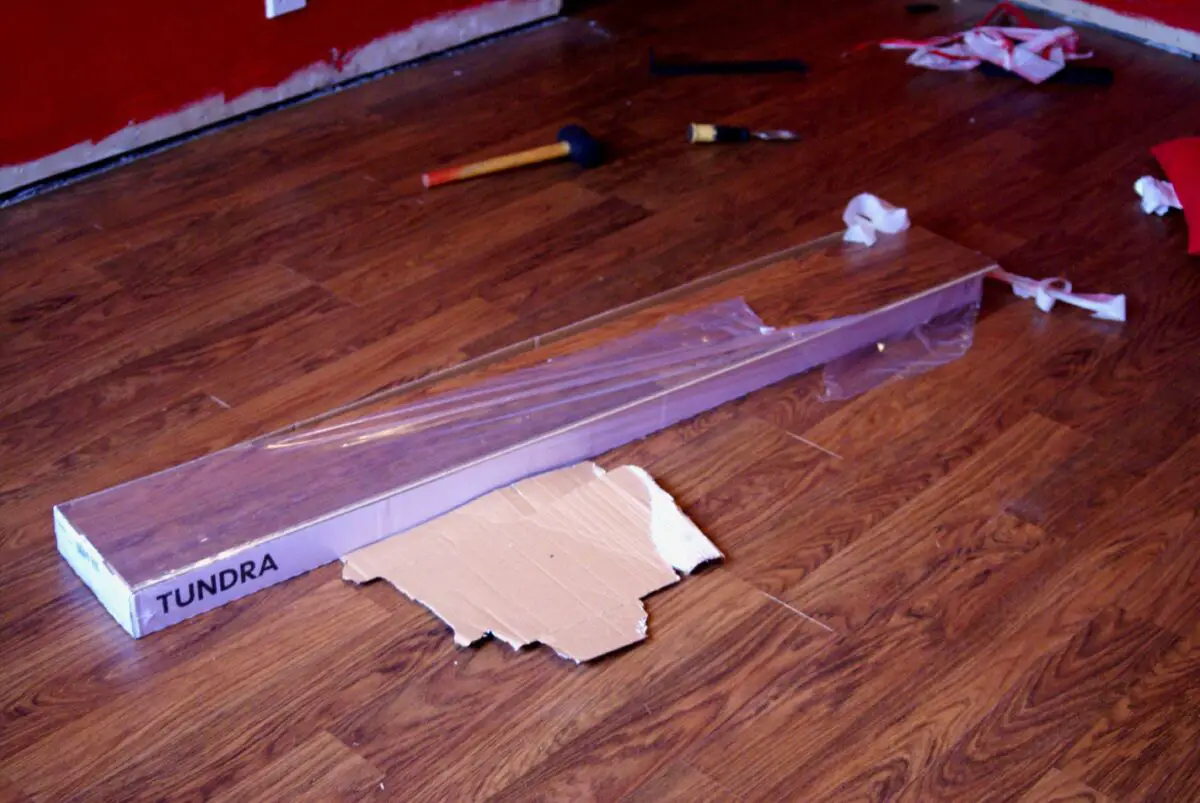Trimming laminate countertops without a router is a challenging task for most homeowners. After countless DIY projects, I’ve learned that being resourceful and adaptable is essential. In this article, I’d like to share my knowledge about how to trim laminate without a router to make impeccable laminate trimmings.
How to Trim Laminate Without a Router
When trimming laminate without a router, mark the cut line on the laminate with a pencil, then carefully cut along the line using the fine-toothed handsaw or jigsaw. Use a file to smooth out the rough edges, ensuring not to overdo it and damage the laminate surface.
I’ve encountered several methods to trim laminate countertops using everyday tools that many homeowners already possess. With a little patience and the right technique, you can make your laminate countertops look impeccable, even if you’re new to the DIY world. Let’s get started on how to make it happen.

Steps in Trimming Laminate Without Using a Router
I’ve come across a handy method for trimming laminate countertops without a router, which is what you’re looking for. Here are quick steps to follow.
| Steps | Actions |
| Choose an alternative to a router | Select either a manual or power-cutting tool |
| Take safety precautions | Wear protective gear |
| Measure and set cutting lines | Take accurate measurements |
| Trim the laminate | Cut along the line carefully with steady strokes |
| Fine-tune the edges | Sand the edges and file the laminate |
Step 1: Select the Right Tools
Before diving into the process of trimming laminate without a router, you must first prepare the appropriate tools for the project.
Manual Cutting Tools
When it comes to trimming laminate countertops without a router, I start with manual cutting tools that you can normally find in my home. Some options that work well are:
- Fine-tooth saw
- File or sandpaper
A fine-tooth saw helps trim larger sections, while a file or sandpaper can smooth the edges and create a finished look. This is also what I used to polish my wooden dowel after cutting it without a saw.
Power Cutting Tools
For those who prefer using power tools, there are still ways to trim laminate countertops without a router. Some of my go-to options include:
- Circular saw
- Jigsaw
- Laminate trimmer
- Handsaw
A circular saw can easily make straight and angled cuts, while a jigsaw allows for more intricate cutting patterns. I often rely on an oscillating multi-tool with a straight-cutting blade for tight spots and detailed work. Remember to use fine-tooth blades with these power tools to prevent the laminate from chipping or cracking.
Step 2: Take Safety Measures
Whether using manual or power-cutting tools, proper safety precautions are essential. I’ve learned from my own experiences that taking precautionary steps can prevent injuries and ensure a more enjoyable DIY project.
- Wear protective gear: Wear safety glasses, gloves, and a dust mask to protect your eyes, hands, and lungs from dust and debris.
- Secure the laminate: Prevent slips and accidents by holding the laminate firmly in place using clamps or other securing methods.
Step 3: Measure and Make Cut Lines
After working on several DIY projects, I know that measuring accurately is essential to get the desired result. I double-check my measurements before cutting the laminate to avoid any costly mistakes for DIY home renovation. Precise measuring also ensures that the laminate fits perfectly on the countertop.
Once I’ve taken accurate measurements, I go ahead and mark the cut lines on the laminate using a straight edge and a pencil. Marking the lines ensures a clear guide for cutting the laminate without using a router and helps achieve a clean and precise cut.
Step 4: Trim the Laminate
Even without a router, I soon discovered it’s possible to achieve a professional result with a few alternative techniques.
Laminate Trimming Techniques Using a Circular Saw
A circular saw is a great choice to cut laminate without a router. I’ve found that using a blade with at least 80 teeth improves the smoothness of the cut, reducing chipping. Look for blades made of tungsten carbide, as it’s stronger than steel and lasts longer before dulling.
Here’s my go-to process when using a circular saw:
- Measure and mark the cutting line on the laminate.
- Support the laminate to prevent it from breaking or causing the saw to bind.
- Apply painter’s tape along the cutting line to avoid chipping and to improve the cut’s quality.
- Set the circular saw depth to slightly more than the thickness of the laminate to prevent cutting the work surface below.
- Cut slowly, evenly, and allow the blade to do most of the work for you.
Laminate Trimming Techniques With a Jigsaw
If you don’t have a router, you can also use a jigsaw to cut laminate. With a steady hand and proper technique, a jigsaw can help you achieve professional-looking results when trimming laminate without a router.
- The key is to use a quality, fine-toothed jigsaw blade to ensure clean and precise cuts. I like using a T101BR blade, as it’s perfect for cutting laminates.
- Secure your working surface and the laminate material.
- Take time while cutting and follow your measured guidelines to make the best possible cut. Move the jigsaw in an up-and-down motion as you follow the guide.
Laminate Trimming Techniques Using a Laminate Trimmer
In my experience, a laminate trimmer is an excellent tool for trimming laminate countertops without a router. It offers a straightforward, efficient, and accurate way to trim your laminate without a saw or a router. Here’s a brief overview of how to get the job done efficiently and effectively:
- Secure your laminate countertop to your work surface to prevent shifting or movement while cutting.
- Adjust the laminate trimmer’s cutting depth based on the thickness of your laminate. This will ensure a precise, clean cut.
- Guide the trimmer along the edge of the laminate, slowly and steadily, to achieve a straight, smooth cut.
Laminate Trimming Techniques With a Handsaw
When I need to trim laminate without a router, one of my favorite tools to use is a fine-toothed handsaw. It’s an affordable and accessible option, perfect for DIY enthusiasts like me. Here’s how I usually go about cutting laminate with a handsaw:
- Firmly hold the laminate in place using clamps. This ensures the sheet doesn’t move while cutting and helps me achieve a clean, straight cut.
- Maintain a consistent angle when cutting, especially for cutting 45-degree angles.
- Cut at a moderate speed to avoid chipping the laminate.
Step 5: Fine-Tune the Edges
With some patience and the right techniques, you’ll achieve a professional-looking result for your DIY project. Now, it’s time to fine-tune the edges.
- Sand the edges: After trimming laminate despite not having a router, my go-to method for a smooth finish is damp 400-grit sandpaper. Gently sanding the edges removes burrs or jagged areas and makes repositioning easier. This process is also the same as how you sand concrete manually, which can give a nice result.
- File the laminate: Use a fine-toothed file, preferably a laminate file, to ensure the laminate ends are neat and clean. File in one direction, working from the top edge downwards.
After these steps, you should have a beautifully trimmed laminate edge without using a router! Give these methods a try for your next DIY project.
Related Questions
How Do You Cut Laminate by Hand?
To cut laminate by hand, I usually use a fine-toothed handsaw or jigsaw. First, I mark the cutting line with a pencil and then support the laminate on a stable surface. I keep the saw or jigsaw at a low angle to reduce chipping and ensure a smooth, clean cut.
What Is the Easiest Way to Cut a Laminate?
In my experience, the easiest way to cut laminate is using a circular saw with a fine-toothed blade. This ensures quick, precise cuts with minimal effort. Be sure to set the proper blade depth and use a straight edge to guide your cuts.
What Are Alternatives to a Router for Trimming Laminate?
When I don’t have access to a router, I often turn to alternatives like a fine-toothed handsaw, jigsaw, or a combination of a circular saw and file. These tools, when used with care, can offer decent results for trimming laminate.
Conclusion
You can use a circular saw, jigsaw, laminate trimmer, or a handsaw to trim laminate effectively, even without having a router. By following the steps and tips mentioned, you’ll have a high-quality finish on your laminate without the need for a router. Happy DIY-ing!


